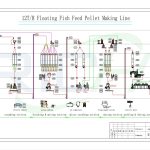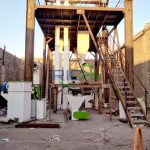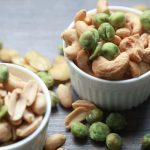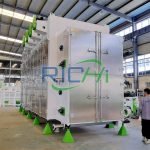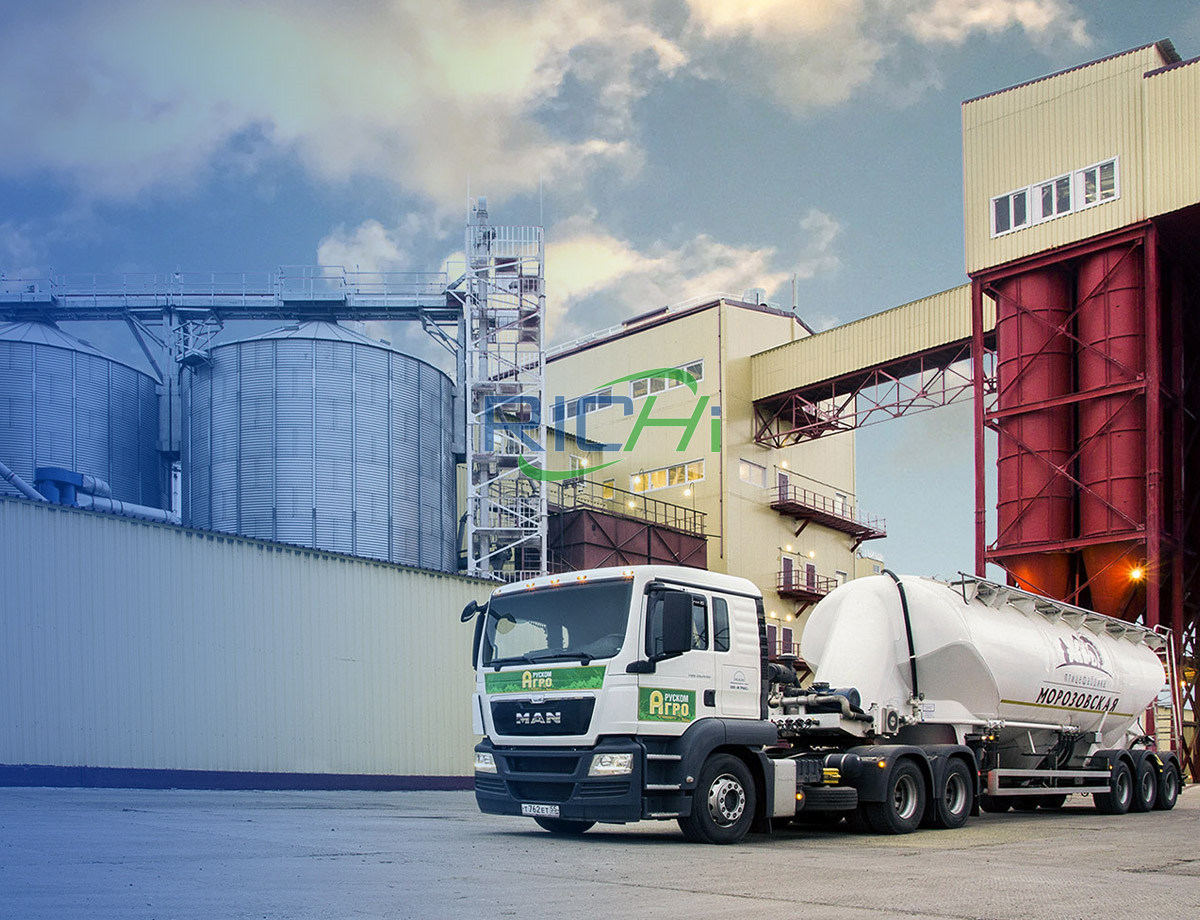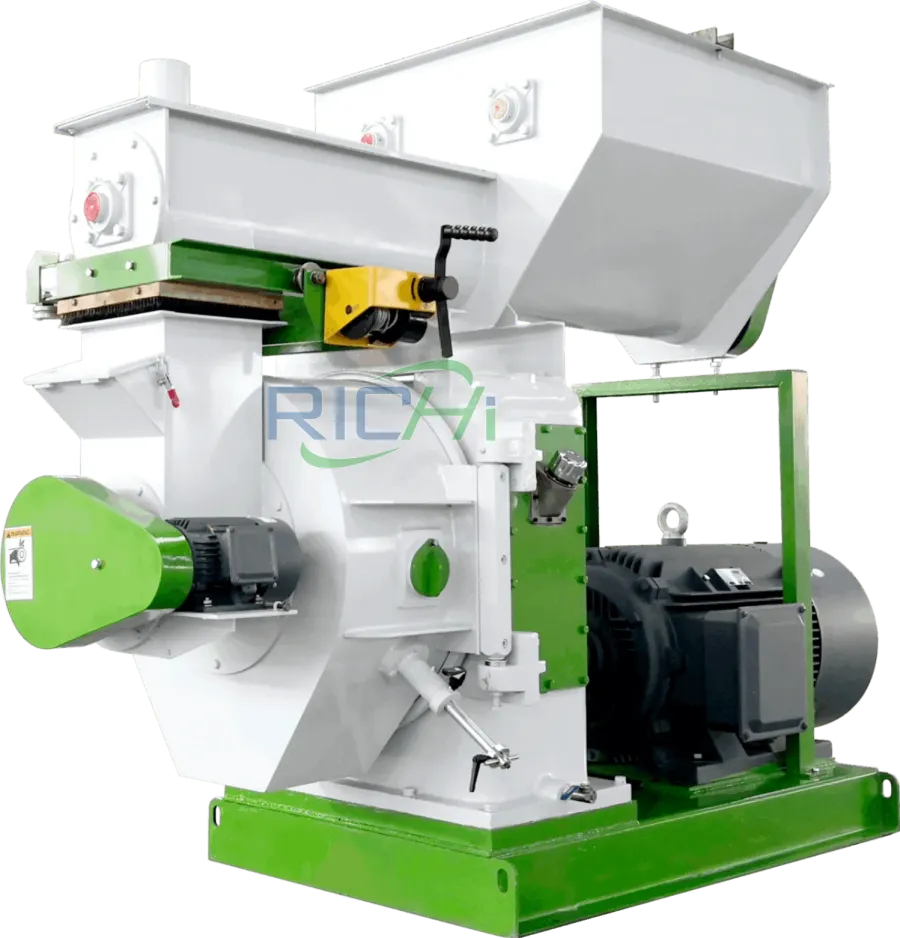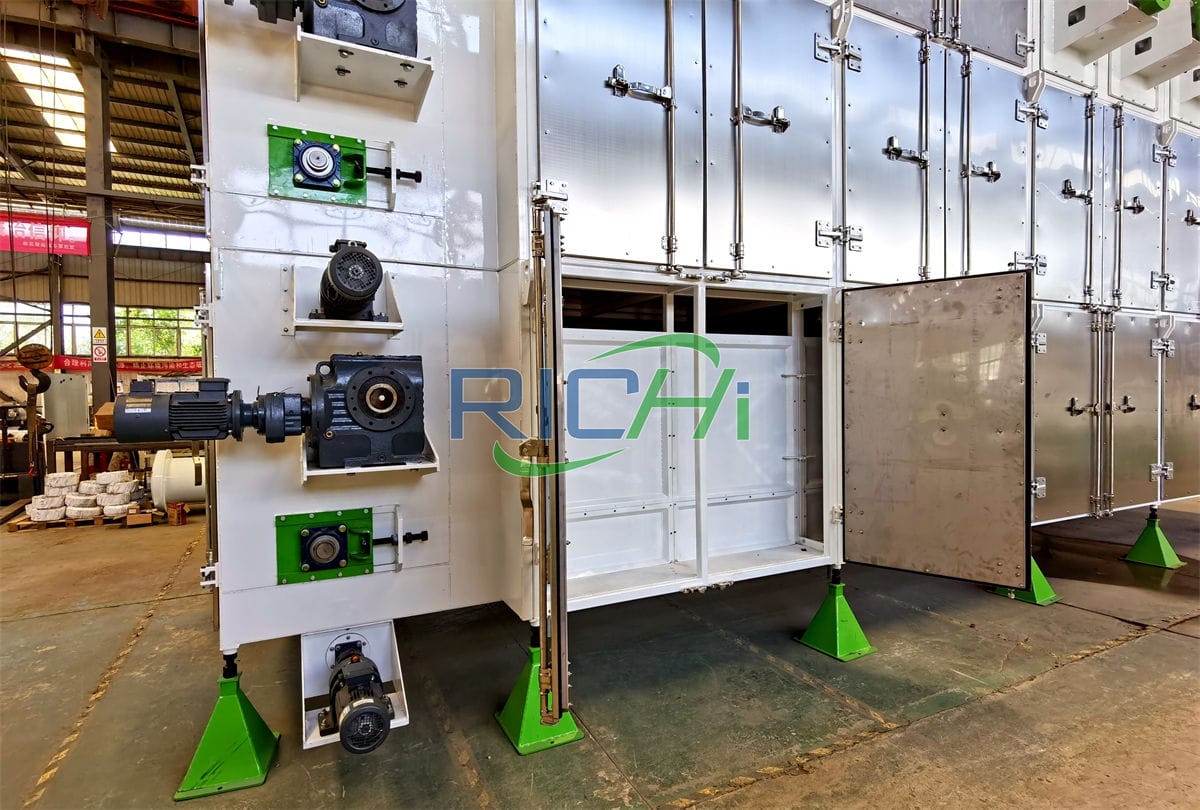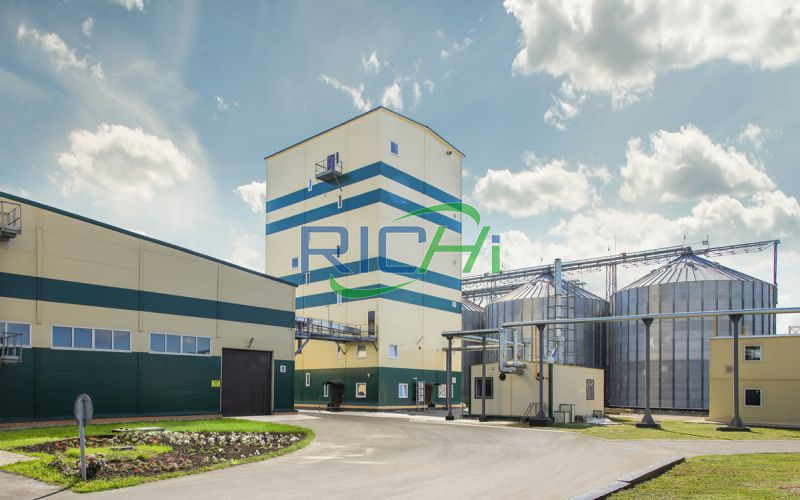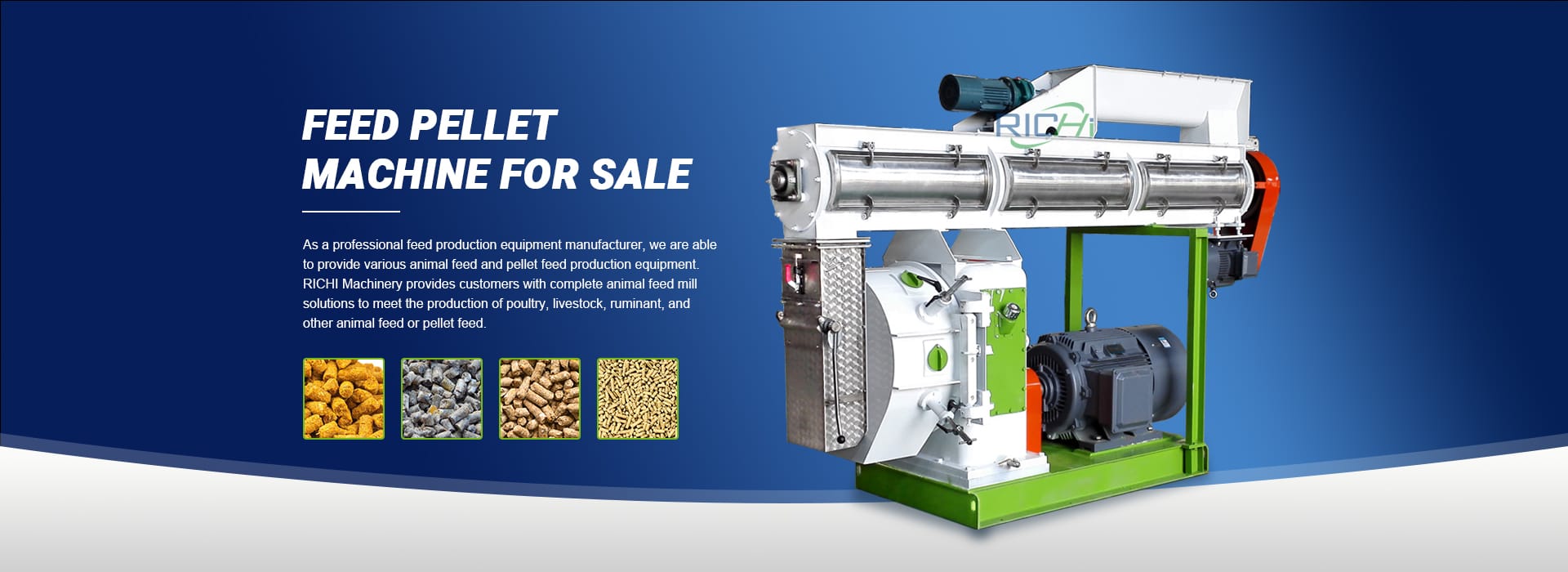Establishing a 10 tons per hour (t/h) animal feed manufacturing plant involves a considerable capital investment. Among the various factors contributing to the total investment, equipment costs represent a significant portion of the overall expenditure. This article examines the percentage of total investment typically allocated to equipment costs in a 10t/h animal feed manufacturing plant and the factors influencing this allocation.
Overview of a 10t/h Animal Feed Manufacturing Plant
A 10t/h animal feed plant is considered medium-scale within the feed industry. This type of plant can produce approximately 80 tons of feed per 8-hour shift, translating to around 240 tons per day with continuous operation. The annual production capacity can reach between 70,000 to 80,000 tons, depending on operational efficiency and downtime.
Key Components of Total Investment
The total investment for a 10t/h animal feed manufacturing plant generally encompasses several components, including:
- Land acquisition and site preparation
- Construction and civil works
- Equipment and machinery
- Installation and commissioning
- Utilities and infrastructure
- Working capital
- Pre-operative expenses
- Contingency funds
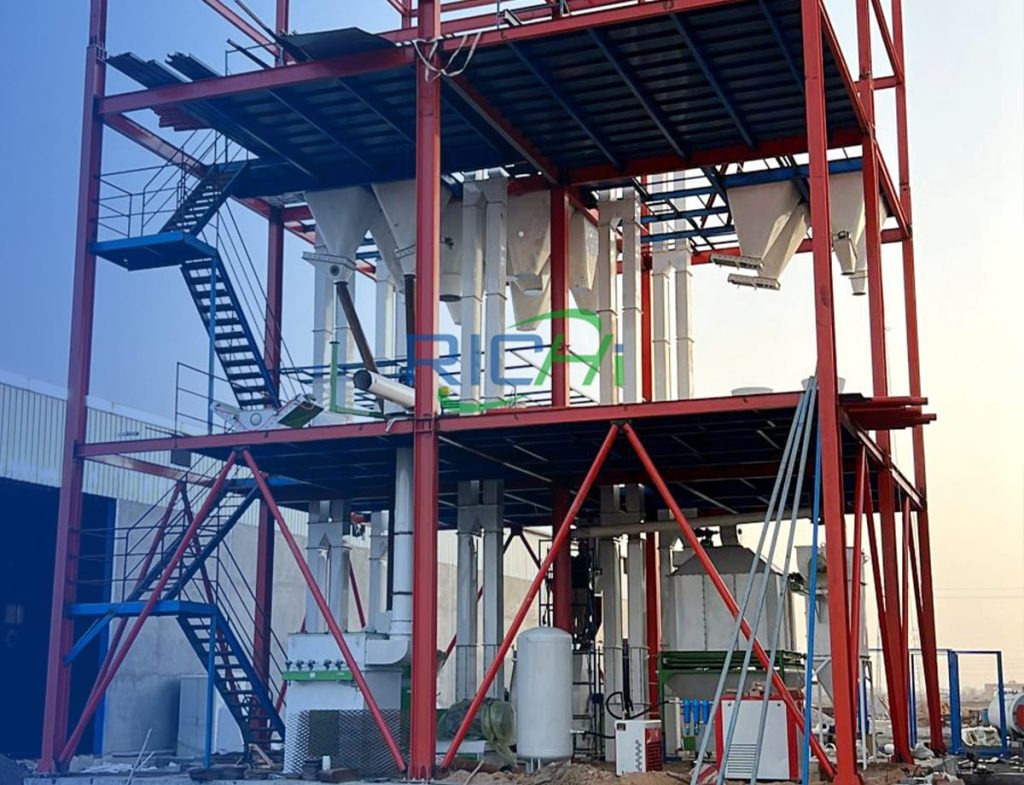
Equipment Cost Breakdown
The feed factory machines for a 10t/h animal feed plant typically includes:
- Raw material handling equipment (silos, conveyors, elevators)
- Grinding equipment (hammer mills)
- Mixing equipment
- Pelleting equipment
- Cooling and drying equipment
- Packaging equipment
- Auxiliary equipment (boilers, compressors, etc.)
- Control systems and automation
Percentage of Equipment Cost in Total Investment
Industry data and expert estimates suggest that equipment costs for a 10t/h animal feed manufacturing plant usually account for 50-60% of the total investment. This percentage may vary due to several influencing factors, which we will explore in detail.
Factors Influencing Equipment Cost Percentage
- Level of Automation: Plants with higher automation levels typically allocate a larger portion of their investment to equipment. Advanced automated systems can push the equipment cost percentage toward the higher end of the range (closer to 60%).
- Quality of Equipment: Investing in high-quality, premium brand equipment will raise the equipment cost percentage. While this increases initial investment, it often leads to greater efficiency and lower maintenance costs over time.
- Scope of Auxiliary Equipment: The extent of auxiliary equipment, including laboratory equipment, quality control systems, and environmental control systems, can significantly impact the equipment cost percentage.
- Land and Building Costs: In regions where land and construction costs are high, the relative percentage of equipment costs may be lower, even if absolute equipment costs remain unchanged.
- New vs. Used Equipment: Opting for used or refurbished equipment can decrease the equipment cost percentage, but this choice should consider potential efficiency losses and higher maintenance expenses.
- Customization Requirements: Customizing equipment to meet specific production needs or local regulations can lead to a higher equipment cost percentage.
- Source of Equipment: Importing equipment from developed countries generally increases costs compared to sourcing from local or regional manufacturers, potentially raising the equipment cost percentage.
Breakdown of Equipment Costs
Within the allocation of equipment costs, the distribution typically follows this pattern:
- Pelleting equipment: 25-30%
- Grinding equipment: 15-20%
- Mixing equipment: 10-15%
- Raw material handling equipment: 10-15%
- Cooling and drying equipment: 10-15%
- Packaging equipment: 5-10%
- Auxiliary equipment: 10-15%
- Control systems and automation: 5-10%
Case Study: Investment in a 10t/h Animal Feed Plant
To illustrate the equipment cost percentage, let’s consider a hypothetical case study:
- Total Investment: $5,000,000
Equipment Cost Breakdown:
- Pelleting equipment: $700,000
- Grinding equipment: $400,000
- Mixing equipment: $300,000
- Raw material handling: $350,000
- Cooling and drying: $300,000
- Packaging equipment: $200,000
- Auxiliary equipment: $350,000
- Control systems: $200,000
Total Equipment Cost: $2,800,000
In this scenario, the equipment cost represents 56% of the total investment, which falls within the typical range of 50-60%.
Other Investment Components:
- Land and site preparation: $500,000 (10%)
- Building and civil works: $800,000 (16%)
- Installation and commissioning: $300,000 (6%)
- Utilities and infrastructure: $200,000 (4%)
- Working capital: $250,000 (5%)
- Pre-operative expenses: $100,000 (2%)
- Contingencies: $50,000 (1%)
Implications of Equipment Cost Percentage
Understanding the equipment cost percentage is essential for several reasons:
- Financial Planning: A higher equipment cost percentage may necessitate more upfront capital or alternative financing strategies. Investors and lenders often consider this ratio when evaluating project viability.
- Operational Efficiency: Generally, a higher equipment cost percentage indicates a more modern and efficient plant, leading to lower operational costs and higher productivity in the long run.
- Depreciation and Tax Implications: Equipment costs are typically depreciated over several years, influencing the plant’s financial statements and tax obligations differently than other investment components.
- Future Expansion Considerations: Plants with a higher equipment cost percentage may be better positioned for future capacity expansions, as they often incorporate more advanced and scalable systems.
- Competitive Advantage: Increased investment in equipment can provide a competitive edge through improved product quality, consistency, and production flexibility.
Conclusion
In a 10t/h animal feed manufacturing plant, equipment costs typically account for 50-60% of the total investment. This significant proportion highlights the importance of careful equipment selection and investment planning. While a higher equipment cost percentage may increase initial capital requirements, it often leads to enhanced operational efficiency, product quality, and long-term profitability.
Investors and plant managers must balance the desire for advanced, efficient equipment against budget constraints and market demands. Factors such as automation level, equipment quality, customization needs, and sourcing strategies all play crucial roles in determining the final equipment cost percentage.
Ultimately, the decision regarding equipment investment should be made with a long-term perspective, considering not only the initial costs but also the potential for improved productivity, reduced operational expenses, and enhanced market competitiveness. By thoroughly analyzing these factors and aligning equipment investments with overall business strategy, feed manufacturers can optimize their capital allocation and position themselves for success in the competitive animal feed industry.
For details please contact: pelletizer
WhatsApp:86 138 3838 9622
Email:enquiry@richipelletmachine.com


